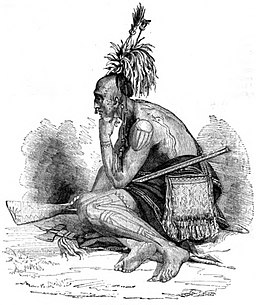 Emily Carr was born in Victoria, British Columbia in 1871. Her mother and father both died by the time she was sixteen leaving her eldest sister in charge. Emily decided to go to San Francisco to study art, and then later to London and Cornwall in Britain, and later Paris. She travelled to the aboriginal communities on the west coast of Vancouver Island, and later the Queen Charlotte Islands, Upper Skeena River and Alert Bay to sketch and paint the life of the indigenous people. Her work was not appreciated at the time and she built a house with apartments and ran it like a boarding house for the next 15 years. During this time she did little painting although she enjoyed teaching art to children.
Emily Carr was born in Victoria, British Columbia in 1871. Her mother and father both died by the time she was sixteen leaving her eldest sister in charge. Emily decided to go to San Francisco to study art, and then later to London and Cornwall in Britain, and later Paris. She travelled to the aboriginal communities on the west coast of Vancouver Island, and later the Queen Charlotte Islands, Upper Skeena River and Alert Bay to sketch and paint the life of the indigenous people. Her work was not appreciated at the time and she built a house with apartments and ran it like a boarding house for the next 15 years. During this time she did little painting although she enjoyed teaching art to children.
She began to paint again after meeting Lawren Harris, of the Group of Seven in Ontario. For awhile she painted indigenous subjects, but gradually changed to painting the natural world around her: forests, beaches and skies. Many of her paintings depict her feelings about trees: “Trees are so much more sensible than people, steadier and more enduring.”
In 1937, Emily suffered a heart attack and eventually had to stop painting. She began to take her writing and form it into a book. Her first book was published in 1941, Klee Wyck, about her experiences with the indigenous people of the west coast. She wrote six more books, some of which were published after her death in 1945: The Book of Small, The House of All Sorts, Growing Pains, The Heart of a Peacock, Pause, and Hundreds and Thousands.“
For more information:
Some of her paintings:

Indian Church 
Big Raven 
Forest 
Totem Walk at Sitka 
Scorned as Timber, Beloved of Sky 
Zunoqua 
Vanquished 
Gitwangak 
Stumps and Sky 
Kitwancool 
War Canoes Alert Bay 
Strait of Juan de Fuca
Books to read:

Picture book about Emily Carr. 
A biography of Emily Carr written by a woman who was taught art by Emily as a child and remained close to her. 
A fictional account of Emily as a young girl. 
Short stories of Emily’s experiences with the indigenous people of the west coast.
Art Activities:
- Create a watercolour resist tree landscape: Incredible Art.
- Draw a tree with pastels in Emily Carr’s style: High Lakes Art-in-a-Box.
And if you are near Victoria, you can visit the house where she grew up when it opens again in May 2019: Emily Carr House.









 Archibald was born on the 11th of November, 1861 to Archibald and Susannah Lampman. His father was rector of Trinity Church in a small town near Lake Erie called Morpeth in what is now Ontario. Three sisters followed and his early childhood was happy and uneventful.
Archibald was born on the 11th of November, 1861 to Archibald and Susannah Lampman. His father was rector of Trinity Church in a small town near Lake Erie called Morpeth in what is now Ontario. Three sisters followed and his early childhood was happy and uneventful.






 For our timeline book we illustrated the Creation Story of Turtle Island.
For our timeline book we illustrated the Creation Story of Turtle Island.














